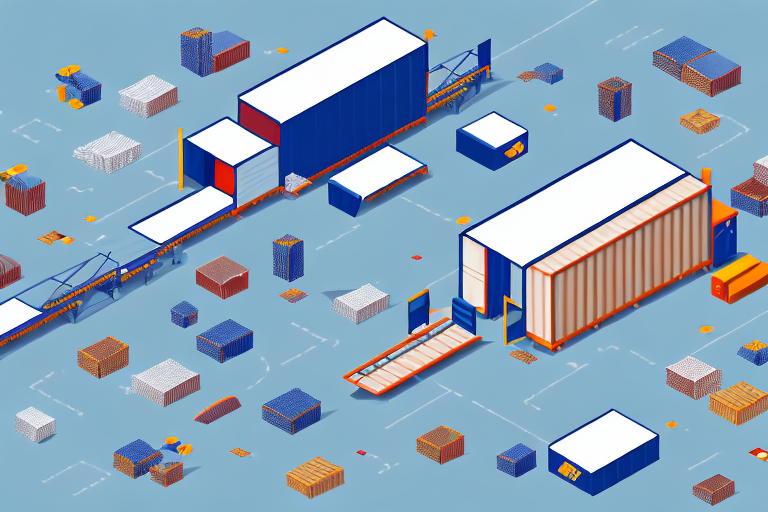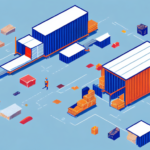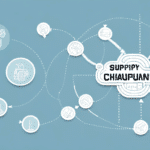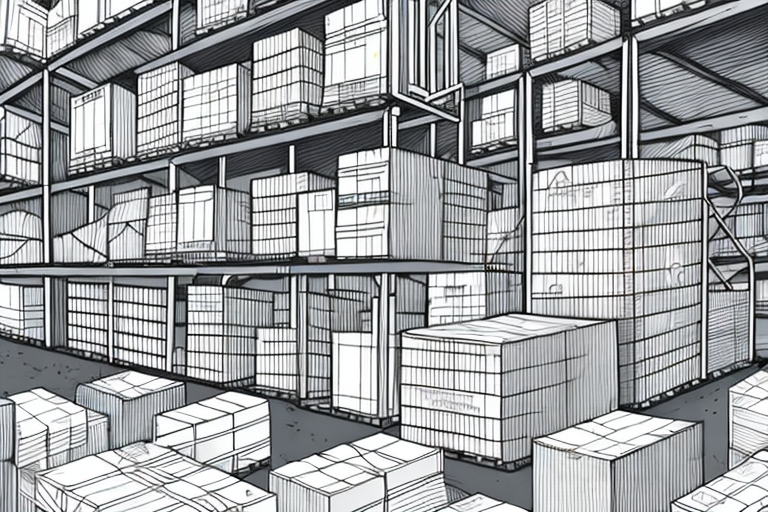Unlocking the Benefits of Reverse Logistics
In today's fast-paced business environment, optimizing every facet of your supply chain is essential. Reverse logistics, a critical yet often overlooked component, manages the flow of products from their final destination back to the origin for returns, refurbishing, or recycling. This process not only enhances sustainability but also delivers significant financial and operational benefits to businesses of all sizes.
What is Reverse Logistics?
Reverse logistics encompasses the comprehensive management of product returns, refurbishing, and recycling. This process involves coordinating multiple stakeholders, including manufacturers, retailers, and customers, to ensure products are efficiently handled after their initial sale.
The surge in e-commerce has heightened the importance of reverse logistics, as online sales typically result in higher return rates. According to a Statista report, the average return rate for online purchases can range from 20% to 30%, underscoring the necessity of robust reverse logistics systems.
Effective reverse logistics can enhance a company's profitability by minimizing waste, reducing production costs, and promoting environmentally responsible practices through recycling and refurbishing initiatives.
The Importance of Reverse Logistics in Today's Business Environment
In the current business landscape, reverse logistics is vital for maintaining competitive advantage. The rise of e-commerce has increased product returns, necessitating efficient reverse logistics to manage these returns effectively.
Moreover, consumers are increasingly prioritizing sustainability, seeking brands that demonstrate environmental responsibility. A Forbes article highlights how sustainable practices, including reverse logistics, significantly contribute to customer loyalty and brand reputation.
By optimizing reverse logistics, companies can reduce costs associated with returns, such as shipping and restocking fees, while also generating additional revenue through the resale of refurbished products.
How Reverse Logistics Can Help Your Business Save Money
Reverse logistics offers substantial cost-saving opportunities for businesses. By effectively managing returns, refurbishing products, and recycling materials, companies can drastically reduce waste and operational expenses.
Improved inventory management is another key benefit. Tracking returns and analyzing their causes allows businesses to identify trends, avoid overstocking or understocking, and streamline ordering processes, thereby minimizing unnecessary expenses.
- Reduction in waste disposal costs
- Lower production costs through efficient refurbishing
- Revenue generation from reselling refurbished products
These strategies not only enhance profitability but also contribute to greater customer satisfaction by ensuring products are managed responsibly post-sale.
Understanding the 3 R's of Reverse Logistics: Returns, Refurbishing, and Recycling
The reverse logistics process can be categorized into three main stages:
- Returns: Managing products returned by customers, including inspecting, determining return reasons, and deciding whether to resell or return to the manufacturer.
- Refurbishing: Repairing and restoring returned products to a sellable condition.
- Recycling: Repurposing materials from products that cannot be refurbished, ensuring eco-friendly disposal.
Implementing effective strategies for each of these stages helps companies reduce waste, recover valuable resources, and enhance customer satisfaction through efficient handling of returns.
The Role of Technology in Streamlining Reverse Logistics Processes
Advanced technology plays a pivotal role in optimizing reverse logistics. Tracking systems enable real-time monitoring of product movements, ensuring transparency and efficiency throughout the process.
Automation tools can expedite refurbishing and recycling operations, reducing manual labor and increasing throughput. Additionally, data analytics help identify return patterns and underlying issues, allowing businesses to make informed decisions to minimize future returns.
Online portals for returns offer customers a seamless experience, simplifying the return process and providing visibility into the status of their returns. This not only enhances customer satisfaction but also reduces the burden on customer service teams.
According to a study by McKinsey & Company, companies leveraging technology in reverse logistics see a significant reduction in processing times and costs.
Best Practices for Implementing a Successful Reverse Logistics Program
Establishing an effective reverse logistics program requires strategic planning and collaboration. Key best practices include:
- Partner Collaboration: Work closely with suppliers and partners to align goals and streamline processes.
- Clear Policies: Develop transparent policies for handling returns, refurbishing, and recycling to ensure consistency and efficiency.
- Continuous Improvement: Regularly evaluate and optimize reverse logistics processes to meet evolving business objectives.
Effective communication with customers is also crucial. Providing clear return instructions and timely updates builds trust and encourages customer participation in reverse logistics programs.
Incentives such as free return shipping or discounts on future purchases can further enhance customer engagement and loyalty.
Common Challenges Faced in Reverse Logistics and How to Overcome Them
While reverse logistics offers numerous benefits, businesses often encounter challenges such as:
- Logistical Complexities: Coordinating product movements between multiple parties can be intricate.
- Cost Management: Handling returns and refurbishing products incurs additional costs.
- Product Quality: Assessing the condition of returned products to determine refurbishing viability.
- Customer Satisfaction: Ensuring a smooth return process to maintain positive customer experiences.
To address these challenges, businesses should implement robust processes, invest in quality control measures, and leverage technology to enhance efficiency and transparency.
For example, integrating blockchain technology can improve traceability and accountability in reverse logistics, reducing the risk of errors and enhancing product quality assessments.
Case Studies: Real-Life Examples of Companies Benefitting from Reverse Logistics
Numerous companies have successfully harnessed reverse logistics to drive efficiency and profitability:
- Electronics Manufacturer: A leading electronics company saved millions by refurbishing and reselling returned products, instead of discarding them, thereby reducing waste and recapturing value.
- Online Retailer: A major e-commerce platform minimized returns by enhancing product descriptions and images, resulting in fewer customer returns and increased sales.
- Clothing Brand: A fashion retailer reduced landfill waste by implementing a reverse logistics program that offered store credits and exchanges, boosting customer loyalty and sustainability efforts.
These examples illustrate how effective reverse logistics can lead to significant cost savings, improved customer satisfaction, and enhanced sustainability.
How to Measure the ROI of Your Reverse Logistics Program
Assessing the return on investment (ROI) for reverse logistics involves both quantitative and qualitative measures:
- Cost Tracking: Monitor expenses related to returns processing, refurbishing, and recycling.
- Revenue Recovery: Calculate income generated from reselling refurbished products.
- Customer Metrics: Evaluate customer satisfaction and loyalty through surveys and feedback.
- Operational Efficiency: Measure improvements in processing times and reduction in waste.
By analyzing these metrics, businesses can demonstrate the financial and strategic value of their reverse logistics programs to stakeholders.
Implementing tools like customer surveys and monitoring social media sentiment can provide deeper insights into the program's impact on customer perceptions and brand reputation.
Future Trends in Reverse Logistics: What to Expect in the Coming Years
The landscape of reverse logistics is evolving, driven by emerging trends and technological advancements:
- Increased Sustainability Focus: Greater emphasis on eco-friendly practices and circular economy principles.
- Artificial Intelligence and Automation: Enhanced efficiency through AI-driven analytics and automated processing systems.
- Blockchain Integration: Improved transparency and traceability across the supply chain.
- Circular Economy: Designing products for longevity and recyclability, minimizing waste.
These trends will shape the future of reverse logistics, enabling businesses to enhance sustainability, reduce costs, and improve overall supply chain resilience.
The Impact of E-commerce on Reverse Logistics and How to Adapt
E-commerce continues to revolutionize reverse logistics by increasing the volume and complexity of returns. To thrive in this environment, businesses must:
- Optimize Return Policies: Develop clear, customer-friendly return policies that facilitate easy returns while minimizing abuse.
- Efficient Processing: Implement systems that can quickly process and sort returns to reduce storage costs and accelerate restocking.
- Data-Driven Insights: Utilize analytics to understand return patterns and address underlying issues, such as product quality or inaccurate descriptions.
Adapting to the e-commerce-driven landscape of reverse logistics ensures that businesses can manage returns effectively, maintain customer satisfaction, and sustain profitability.
In conclusion, reverse logistics is an indispensable component of modern supply chain management. By leveraging technology, implementing best practices, and staying attuned to evolving trends, businesses can unlock the full potential of reverse logistics to drive sustainability, efficiency, and profitability.





















